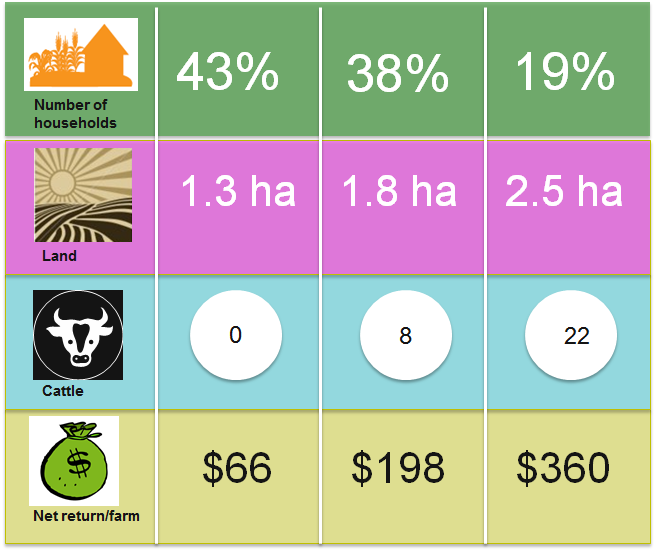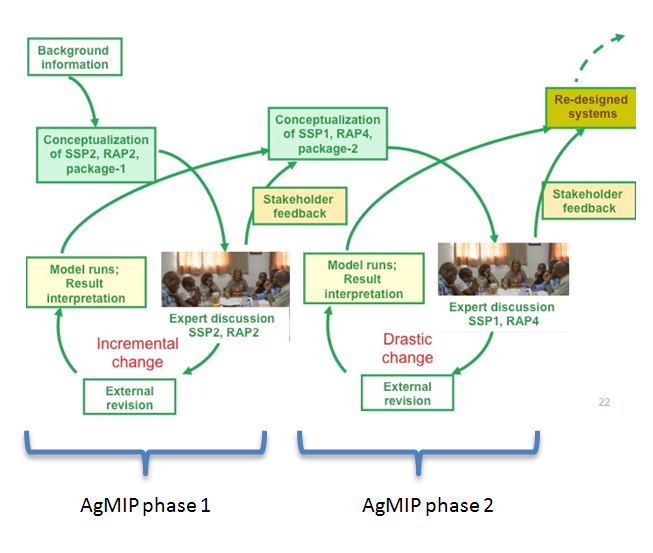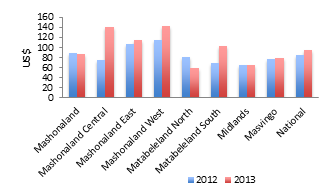Diversifiying smallholder farming systems and market incentives are key strategies

Fig.1. Photograph: Swathi Sridharan
With high poverty levels, and frequent food insecurity, even small production outfalls due to climate change will increase the vulnerability of households. Dominance of maize production is one cause, as the crop is susceptible to climate impact. Other crops, like sorghum, millet, and groundnuts are more climate resilient, and a potential source of food security and income, but have become less popular. Interventions might reduce rural poverty levels and extremely poor; yet many will remain poor.
Decision making must address the complex challenges of increasing production to profitable markets, through better organized links between farmers, markets and institutional networks.

Fig. 2. Impacts of climate change (a), benefits from adaptation (b) and impacts on poverty rates (c): Climate smart adaptation packges can reduce vulnerability; yet poverty levels are likely to remain high.
What does this information tell us?
Diversification and intensification can increase production and farm net returns, offsetting impacts of climate change for more than three quarters of the population. Series of modeled technologies include low rates of mineral and organic fertilizer, inclusion of drought and disease tolerant fodder and legume crops, revitalizing traditional food crops (small grains and legumes) and market oriented livestock production.
read more >>
Fig.3. Economic benefits from climate change adaptation for farm types with different resource endowments
Why is this important?
Climate change is complex and requires solutions towards better integrated and market oriented crop livestock systems. We need to be aware, that adaptions to climate change with benefits in terms of reducing vulnerability, do not always translate substantial monetary gains. This means that the technologies currently in use will not improve the welfare situation of family farms in Nkayi.
read more >>
Fig.4. MIP iterative cycles of re-designing farming systems in consultation with and to inform stakeholders decisions
How did we obtain these results?
The economic analyses result from iterative cycles of consulting stakeholders, integrated climate, crop, livestock and economic assessments and systems re-design. The steps were:
read more >>
Fig. 5. Poverty is widespread: Average household income by province, 2013/14. Matabeleland North, incl. Nkayi district, among the lowest. (Source: ZimVAC, 2013).
Can the results be generalized?
In Zimbabwe most farmers are poor. They will lose from climate change and benefit from adaptation options. Vulnerability remains high throughout the country, because production levels are extremely low and alternative income is limited.
To address the root causes of large scale poverty, solutions in and beyond climate change need to be addressed by the entire agricultural sector, from national to local scales. Higher scale policies must guide decisions that benefit all stakeholders and promote the most appropriate and profitable agricultural commodities, based on robust research information.
read more >>